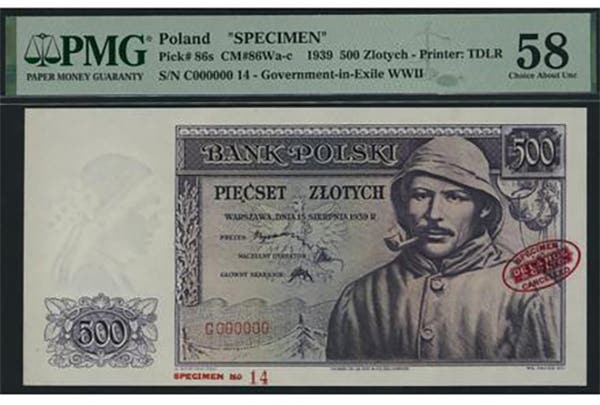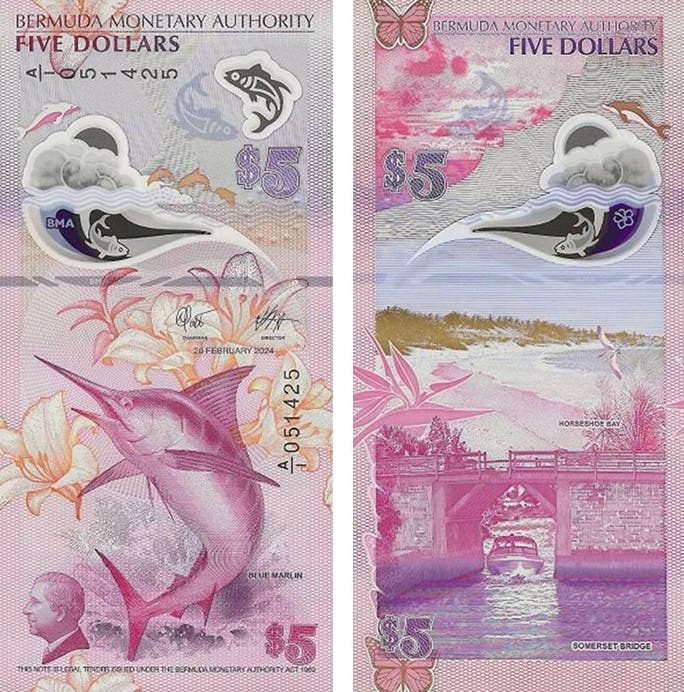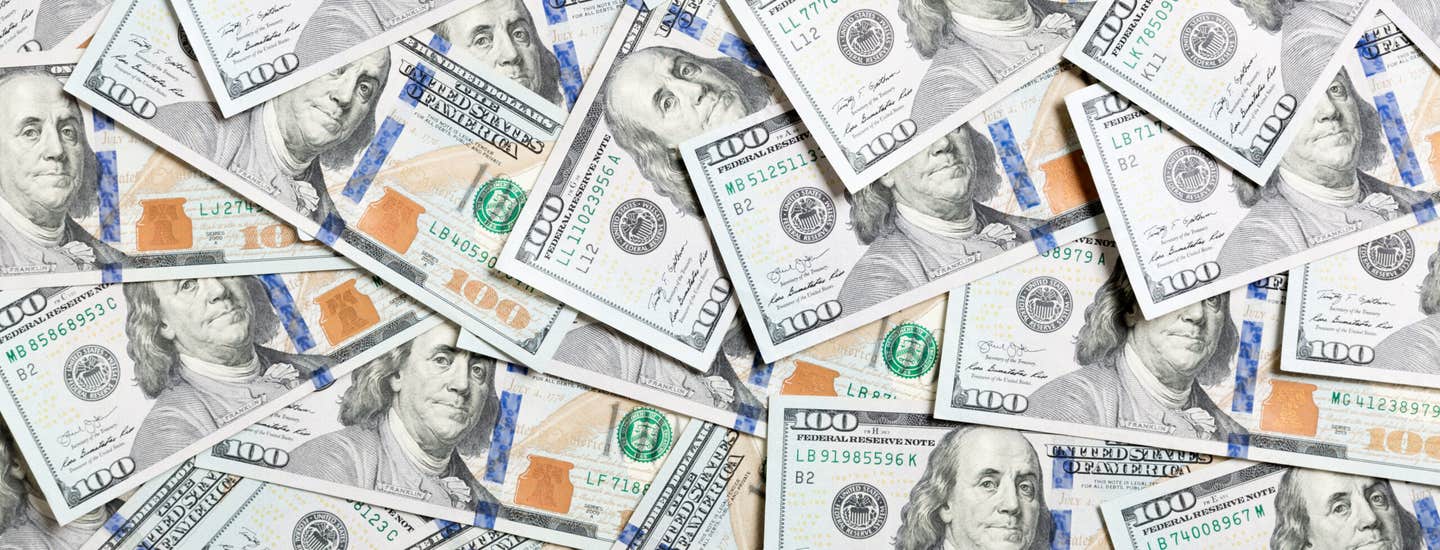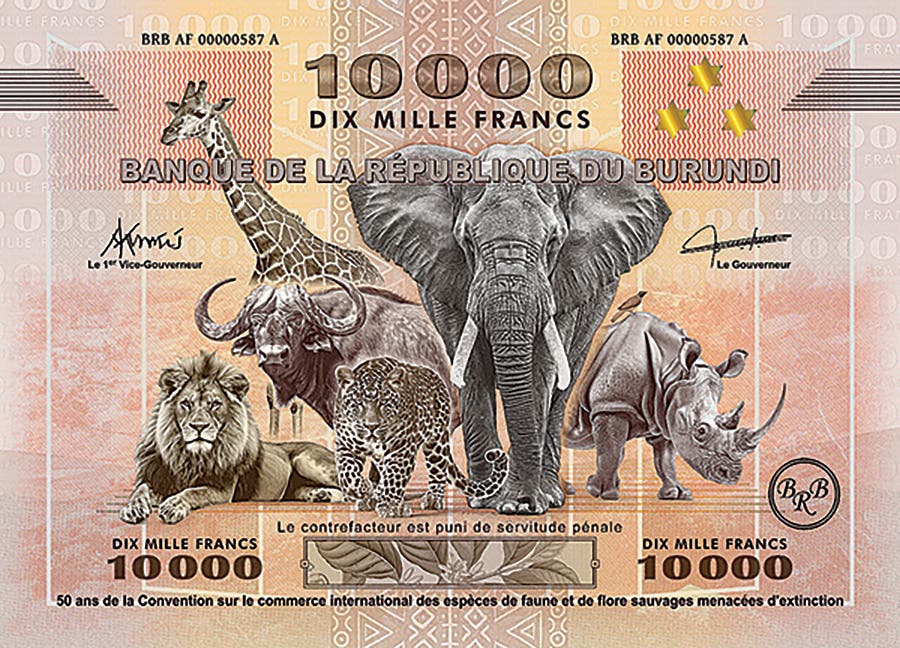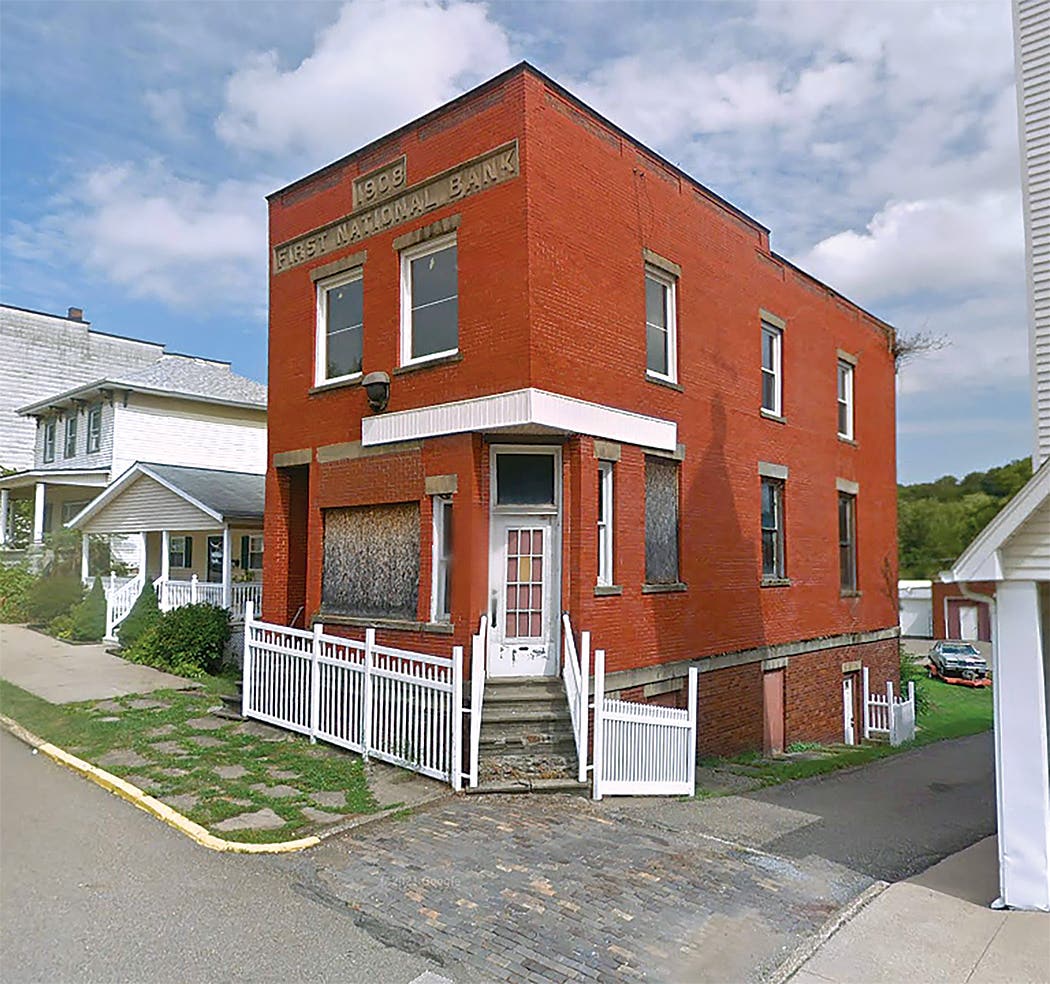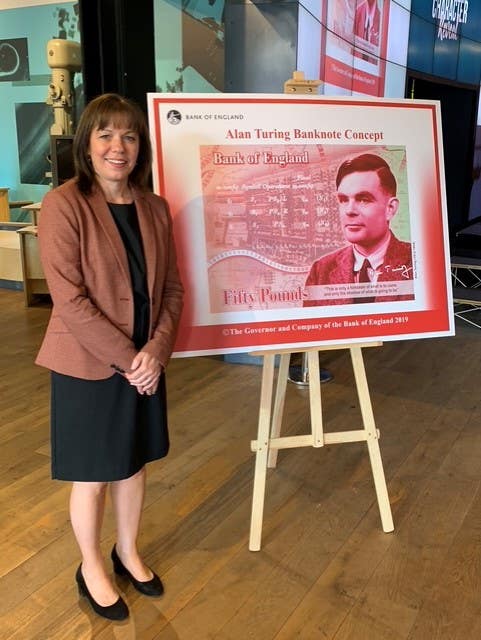National Bank Note circulation peaked in 1932-1933
By Jamie Yakes and Peter Huntoon The purpose of the National Bank Act was to create a new form of currency. To that end, organizers of national banks were required…
By Jamie Yakes and Peter Huntoon
The purpose of the National Bank Act was to create a new form of currency. To that end, organizers of national banks were required to take out circulation by the initial legislation. Prior to passage of the Federal Reserve Act of 1913, the minimum circulation that bankers were required to maintain was: (1) $50,000 for banks with a capital of $150,000 or more, and (2) one-quarter of capital for banks with a capital of less than $150,000. After passage of the Federal Reserve Act, bankers could sell their bonds to the Federal Reserve Banks and get out of the currency-issuing business.
The bottom line was that the National Bank Act produced a supply of National Bank Notes that was predicated on the combined capitalizations of all the banks in the country. Consequently, National Bank Note circulation was fixed by the capitalization of the banks, a number that was rather inflexible because the bankers could not change their capitalizations readily.
The result was that the National Bank Note supply was inelastic. That is, the supply did not respond to changing demands for money in the annual cyclic course of commerce. For example, when money was needed in times of increased activity, such as during crop planting season, there was a shortage of it, so interest rates spiked. In times of diminished activity, such as when crops were sold, there was a surplus of it, so interest rates sank. Thus the inelasticity exacerbated seasonal swings in interest rates.
Even worse, the National Bank Note supply couldn’t increase rapidly during economic emergencies when cash was needed to offset hoarding. This fueled crippling money panics that came along with distressing regularity.
People rarely worried about the maximum circulation that a bank could issue. Bankers, of course, could take out more circulation than the minimum if they wished to invest in more bonds, something they did when circulation was profitable. The upper limit of circulation that a bank could subscribe for was the paid-in capital of the bank.
There was a practical cap on the maximum possible total national currency supply. This was dictated by the supply of Federal bonds that were available to back the currency.
Congress accorded the so-called circulation privilege to specific bond issues. Only those bonds could be used by bankers to back their currency. The bankers would buy these bonds, deposit them with the U.S. Treasury, and then receive National Bank Notes equal to the par value of the bonds. They could then press the nationals into commerce.
The available bonds with the circulation privilege totaled $675 million at the beginning of 1932, virtually all of which were owned by national bankers to back their National Bank Note issues (FR Board, 1932, p. 478).
The U.S. Treasury was pleased with this cap because it limited the volume of inelastic national currency to about 12 percent of the total money supply at the time (FR Board, 1932, p. 480). Consequently, national currency no longer was a major player on the monetary stage going into 1932.
The Federal Reserve Act of 1913 allowed bankers to sell their bonds to the Federal Reserve Banks, which replaced the nationals dollar-for-dollar with elastic Federal Reserve currency. The hope of the framers of the Federal Reserve Act and Treasury officials was that Federal Reserve Notes would quickly supplant all National Bank Notes and eliminate them from the scene.
The problem was that even though the available bonds used to back National Bank Notes earned only 2 percent interest, circulation was sufficiently profitable that the majority of the bankers held on to them and continued to maintain their circulations. In fact, the eligible 2 percent bonds were in sufficient demand for this purpose; they sold at a premium over their par value.
Drat, here we were mired in the midst of the Great Depression and the inelastic national currency was not going away. By its nature, it was actually contributing to the economic woes.
Then came the Federal Home Loan Bank Act, a measure called for by Republican President Herbert Hoover to encourage home ownership by providing low-cost home mortgages. The act was signed into law by Hoover July 22, 1932. However, the form in which it passed it was a notable dud because the only people who could quality for mortgages already were well enough off they didn’t need to fool with the Federal Home Loan Banks (Wikipedia).
Here is where it gets interesting. Over the objections of Hoover and his Treasury officials, a rider was tacked onto the bill that became known as the Glass-Borah Amendment. This granted the circulation privilege for a period of three years from the date of passage of the act to all U.S. bonds that paid interest at 3-3/8 percent or less. The rider had nothing to do with the Federal Home Loan Banks.
Its sponsors were Virginia Democratic Sen. Carter Glass, former Secretary of the Treasury under Woodrow Wilson, and Idaho Republican Sen. William Borah. Both were progressives. Clearly their amendment was a clumsy attempt to inflate the money supply because it would make National Bank Note circulation sufficiently profitable that bankers would be more than happy to invest in the bonds and take out additional circulation.
Far more important, it effectively blew the roof off the then current $675 million cap on total National Bank Note circulation by making a flood of high-yield bonds available for purchase. There were about $3 billion worth of them out there.
Suddenly, instead of worrying about the nominal remaining National Bank Note circulation, the Treasury had to worry about the theoretical maximum amount of such currency that could be created. Not only that, they fretted about the weakening effect the move into national currency was going to have on the Federal Reserve system because the bankers would turn to the Federal Reserve Banks to get the money they needed to buy the newly eligible bonds (FR Board, 1932, p. 474-476).
Treasury officials quickly fathomed that the maximum theoretical National Bank Note circulation was the collective capitalization of all the banks in the country. They summed these and found that total national bank capitalization was $1.570 billion. Holy smokes, a mechanism was now in place that could result in almost a billion dollar expansion of the National Bank Note supply. The potential increase was almost one and half times the size of the existing supply.
The rider on the FHLB act gave bankers a strong incentive to swap out elastic Federal Reserve currency for inelastic national currency, just what the Treasury and economists didn’t want. If taken to its logical conclusion, nationals would grow to 30 percent of the total money supply rather than 12 percent. Then national currency would be a major factor.
Although he chaffed, Hoover did not veto the bill when it crossed his desk because he rationalized that the potential spike in National Bank Note circulation could only last until 1935 when the circulation privilege for the high yield bonds would expire (Awalt, 1932, p. 5). Then the bankers would have to sell those bonds and their money would flow back into the Federal Reserve Banks. There would be a reverse substitution of nationals back into FRNs, and things would normalize.
An important fact is that the FHLB Act did not increase the tax bankers had to pay on their circulation if they used the higher yield bonds. Consequently, the spread between the interest they earned and the tax they had to pay was greater than the spread with the 2 percent bonds. The result was a strong incentive for them to swap out their existing 2 percent bonds even if they didn’t increase their circulations.
So the foregoing is the big picture. What actually happened in the short term is exactly what was predicted. Of course the bankers that had surplus cash acted in their self interest and bought the high yield bonds and used them to inflate their circulations. Within three months of passage of the FHLB act, the National Bank Note supply grew by $125 million and continued to grow. It spiked to $893 million at the beginning of May, 1933, its second highest level in history (O’Conner, 1935). This peak followed the election of Roosevelt and the bank holiday.
The FHLB spike amounted to $220 million more than the early 1932 national bank note circulation, a 33 percent increase. But $220 million was a quarter of the worst case scenario contemplated by the Hoover Treasury, but even so it was a very significant increase.
Just as you might expect, the market value of the old 2 percent bonds fell below par and the glamorous new high yield bonds started selling for a premium as the bankers competed against each other and other investors as they substituted the new for the old (FR Board, 1932, p. 479). They not only bought the high yield bonds to support increased circulations, most simply swapped out their old 2 percent bonds that were used to back their existing circulations.
Type 1 National Bank Notes were the impacted series thanks to the $220 million increase in National Bank Note circulation. That many more Type 1 nationals were issued than otherwise would have been the case.
The rapidly rising tide also helped lift the demand for Type 2s when they came along at the end of May 1933, but not by the same degree. By the time the Type 2s arrived, the peak National Bank Note circulation already had been achieved so the Type 2s were largely replacements for Type 1s that were wearing out. Their numbers were greater than they would have been without the FHLB act simply because the total amount of nationals in circulation was greater.
If the FHLB act had not been passed, there would have been some $220 million fewer nationals in circulation during the peak of the small note era. This would have translated into a roughly 25 percentage decrease in the number of them available to you collectors.
As for just which small-size nationals became more common as a result of the FHLB act, it was the big city bank issues. The big city banks, simply by virtue of their size, held the overwhelming dollar value of available uncommitted capitalization, and their savvy management put it to work to their advantage (FR Board, 1932, p. 479).
In economic terms, the big city banks already were basking in a surplus of cash whereas the small country banks were strapped. Thus the big city banks preferentially got to increase their circulations. After the smoke cleared, the well-intended rider on the FHLB act didn’t do the economy or the little guy any good.
The worst fears of Hoover’s Treasury officials that the National Bank Note supply could inflate by $1 billion to $1.7 billion didn’t come to pass. The near implosion of the banking system during the first months of 1933, Roosevelt’s bank holiday in March 1933 and restructuring of the money supply by the New Deal Treasury by the end of 1934 entirely changed the lay of the land.
The circulation privilege on the high yield bonds did expire on June 22, 1935. Then Treasury called all the remaining 2 percent bonds on Aug. 1, 1935. That was the end of inelastic national currency so reviled by economists and Treasury officials. The New Deal Treasury got rid of the last of it in 1935 by executive action, not through market forces as envisioned by the framers of the Federal Reserve Act back in 1913.
The last gasp tilt toward keeping national currency viable was the ill-advised Glass-Borah rider to the FHLB act of 1932 that bolstered its profitability for the bankers. That tilt was a populist measure designed to inflate the total money supply so some would trickle down to the little guy on the bottom rung of the economic ladder during the depths of the Great Depression. In reality, it just made the big city bankers richer and temporarily burdened the economy with an increased dose of more inelastic currency.
Sources of Information and Sources Cited
Awalt, F. G., 1932, Increase in the Circulation of National-Bank Notes; in, Annual Report of the Comptroller of the Currency: U.S. Government Printing Office, p. 4-5.
Federal Reserve Board, August 1932, Review of the Month, home loan banks, p. 474-476, & Recent legislation on national bank note circulation, p. 478-480: Federal Reserve Bulletin, vol. 18, no. 8.
O’Connor, J.F.T., 1935, Table 4-Authorized capital stock of national banks, circulation secured by bonds, etc.; in, Seventy-Third Annual Report of the Comptroller of the Currency for the year ended October 31, 1935: U.S. Government Printing Office, 852 p.
United States Statutes, National Bank Act and amendments of various dates; Federal Reserve Act of Dec. 23, 1913; Federal Home Loan Bank Act of July 22, 1932: U.S. Government Printing Office.
This article was originally printed in Bank Note Reporter.
>> Subscribe today or get your >> Digital Subscription
More Collecting Resources
• The Standard Catalog of United States Paper Money is the only annual guide that provides complete coverage of U.S. currency with today’s market prices.
• Purchase your copy of The Essential Guide to Investing in Precious Metals today to get started on making all the right investing decisions.



